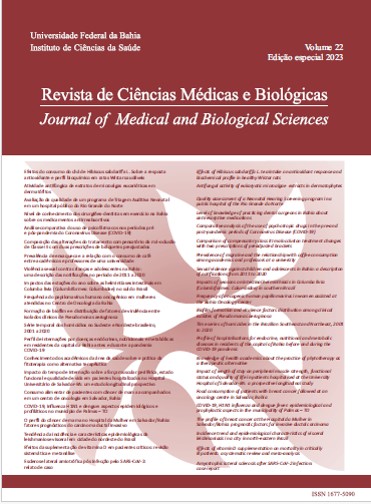Prevalência de enxaqueca e a relação com o consumo de café entre acadêmicos e professores de uma universidade
DOI:
https://doi.org/10.9771/cmbio.v22i4.53076Keywords:
Headache, Migraine, Caffeine, College studentsAbstract
Objectives: Establish and characterize the prevalence of migraine and its relationship with caffeine consumption among academics and professors at a public university in western Pará. Methodology: Cross-sectional, exploratory-descriptive, quantitative study, with data obtained through Google Forms® forms, in a sample of 214 academics and professors of health courses at the State University of Pará, in Santarém, Brazil. The correlation between categorical variables was calculated using Fisher's exact test. Results: The headache prevalence was 74%, of which 75% had clinical features of migraine. Among students, 75% complained of headache, of which 87.8% reported a frequency of 1-15 episodes per month. Among teachers, the prevalence of headache was 65%. The majority were female (62%) and studying or teaching medicine (51%). As for daily coffee consumption, 95% of participants drink 1-5 cups of coffee, with 28% reporting headache worsening and 39% improvement with coffee consumption. There was no significant correlation between the daily amount of coffee consumed and the frequency of headache (p=0.315). Conclusions: The migraine occurrence is high among university students and teachers, as well as coffee consumption, but it is not possible to establish a direct relationship. Both can interfere with the quality of life, requiring further studies and adequate prevention and control measures, minimizing individual and collective damage.
Downloads
Downloads
Published
How to Cite
Issue
Section
License
Copyright (c) 2024 Journal of Medical and Biological Sciences

This work is licensed under a Creative Commons Attribution 4.0 International License.
The Journal of Medical and Biological Sciences reserves all copyrights of published works, including translations, allowing, however, their subsequent reproduction as transcription, with proper citation of source, through the Creative Commons license. The periodical has free and free access.


